Key takeaways
- Pink Floyd’s “Dark Side of the Moon” offers an immersive experience, blending sound and philosophy, making it a timeless piece of rock history.
- The album encourages deep reflection on themes like time, anxiety, and mortality, resonating with listeners on a personal level.
- Listening to the album in a focused environment enhances its emotional impact, revealing new meanings with each experience.
- “Dark Side of the Moon” has reshaped music appreciation, inspiring listeners to seek depth and storytelling in music across various genres.
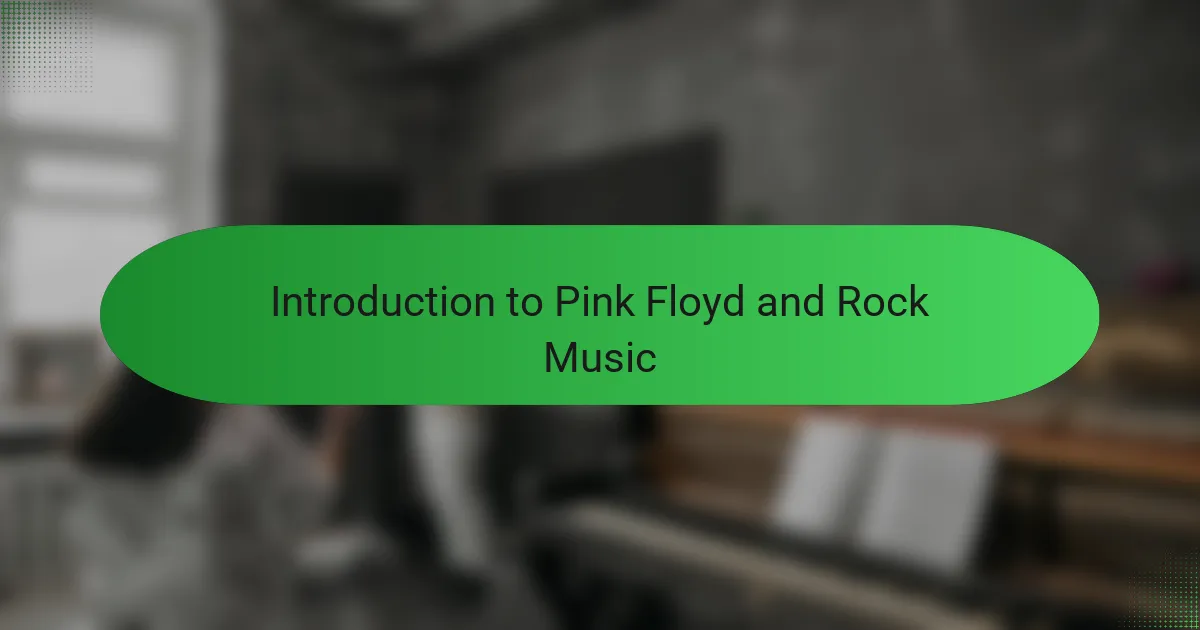
Introduction to Pink Floyd and Rock Music
Pink Floyd isn’t just a band to me; they’re the embodiment of what rock music can achieve beyond loud guitars and steady beats. Their sound tells stories that dig deep into emotions and thoughts, something I found hard to put into words when I first heard them. Have you ever experienced music that feels like it speaks to your soul? That’s exactly what Pink Floyd did for me.
Rock music, to many, is just energetic fun, but it’s so much more—it’s a journey through rebellion, creativity, and emotion. With Pink Floyd’s experimental style, I realized rock could be a canvas for exploring complex ideas, not just a soundtrack for a night out. It’s fascinating how they pushed boundaries and invited listeners like me to think and feel differently.
When I first dove into Pink Floyd’s world, I wasn’t just listening; I was participating in a shared experience that connected fans worldwide. Their music sparked questions about society, existence, and self—questions I still find myself pondering today. Isn’t that the power of great rock music? The ability to make us reflect while we rock out?
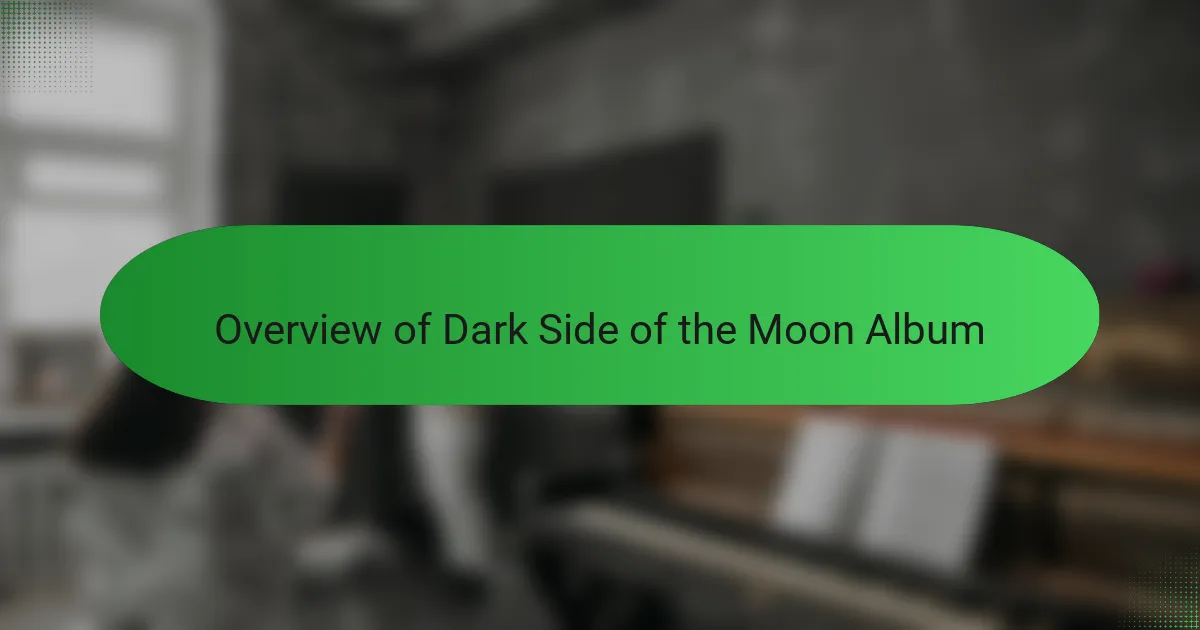
Overview of Dark Side of the Moon Album
Dark Side of the Moon captured me from the very first note—it’s an album that feels like a journey through the human mind. The seamless flow of tracks, each one peeling back layers of life’s pressures and fears, was unlike anything I’d heard before. Have you ever felt music unravel your thoughts in a way that’s both soothing and unsettling? That’s how this album worked on me.
What struck me most was its use of sound effects and effects like the famous heartbeat and cash register sounds that gave the whole album a tactile, almost cinematic quality. It wasn’t just songs playing one after another; it was an experience that demanded my full attention. Listening to it felt like being drawn into a story that was both personal and universal.
And the lyrics—poignant, introspective, sometimes poetic—made me confront ideas about time, mortality, and mental health in a way I hadn’t before. It’s an album that invites you to think deeply, and I found myself revisiting it often just to catch new meanings. Have you noticed how some albums grow with you, revealing more each time? Dark Side of the Moon did that for me, making it timeless in my playlist and my life.

Key Themes and Lyrics of the Album
The lyrics on Dark Side of the Moon hit me like a mirror reflecting my own fears and hopes. Songs like “Time” and “Brain Damage” aren’t just words—they’re raw, honest explorations of aging, mental struggles, and the pressure to conform. I remember the first time “Time” washed over me; it made me question how I was spending my days, and that struck a chord I didn’t expect.
What fascinates me most is how emotional themes like anxiety, greed, and mortality weave seamlessly through the album without ever feeling forced. It’s as if Pink Floyd wraps these heavy topics in a sonic embrace that allows you to face them without fear. Do you ever find that music can open doors to parts of yourself you didn’t even know were locked? For me, this album did exactly that.
The way the lyrics unfold invites you to look inward, confronting your own dark side while offering a subtle hope for understanding and acceptance. I often found myself lost in moments of reflection, moved by the poetic lines and how they resonate differently depending on my mood. Isn’t that the mark of true artistry—making something deeply personal feel universally relatable? Dark Side of the Moon excels at this.
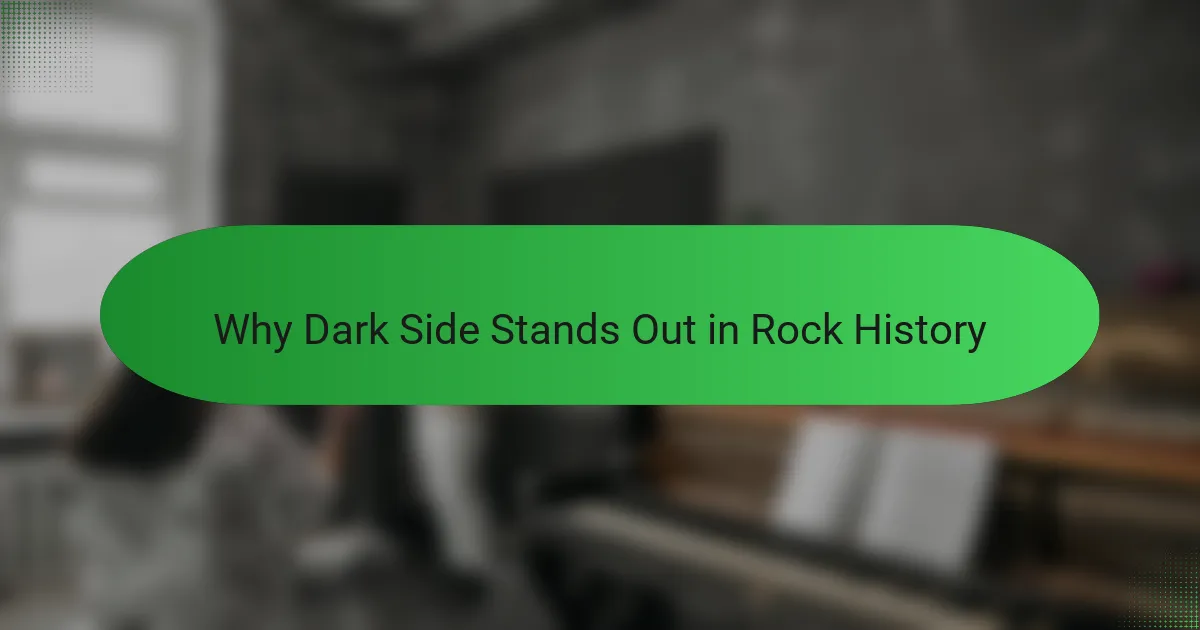
Why Dark Side Stands Out in Rock History
What makes Dark Side of the Moon stand out in rock history is how it transformed an entire genre into something more than just music—it became an immersive experience. When I first listened to it, I realized this album wasn’t just played; it was felt, a sensation that etched itself into my memory. Have you ever encountered a record that changes not only how you hear music but how you perceive life? That’s the power Pink Floyd wielded here.
The album’s innovative use of soundscapes and studio effects was groundbreaking. Back then, rock albums rarely dared to blend experimental sounds with deeply philosophical lyrics, but Dark Side dared brilliantly. From my perspective, this fearless blending opened doors for future artists to explore music as a medium for storytelling on a profound level.
Moreover, its universal themes resonate across generations, which is why it maintains its iconic status. When I hear tracks like “Money” or “Us and Them,” I’m reminded that these issues—greed, conflict, time slipping away—are as relevant now as they were upon release. Isn’t it incredible how an album can remain timeless by speaking to the core of the human experience? That, to me, is why it holds a permanent place in rock history.
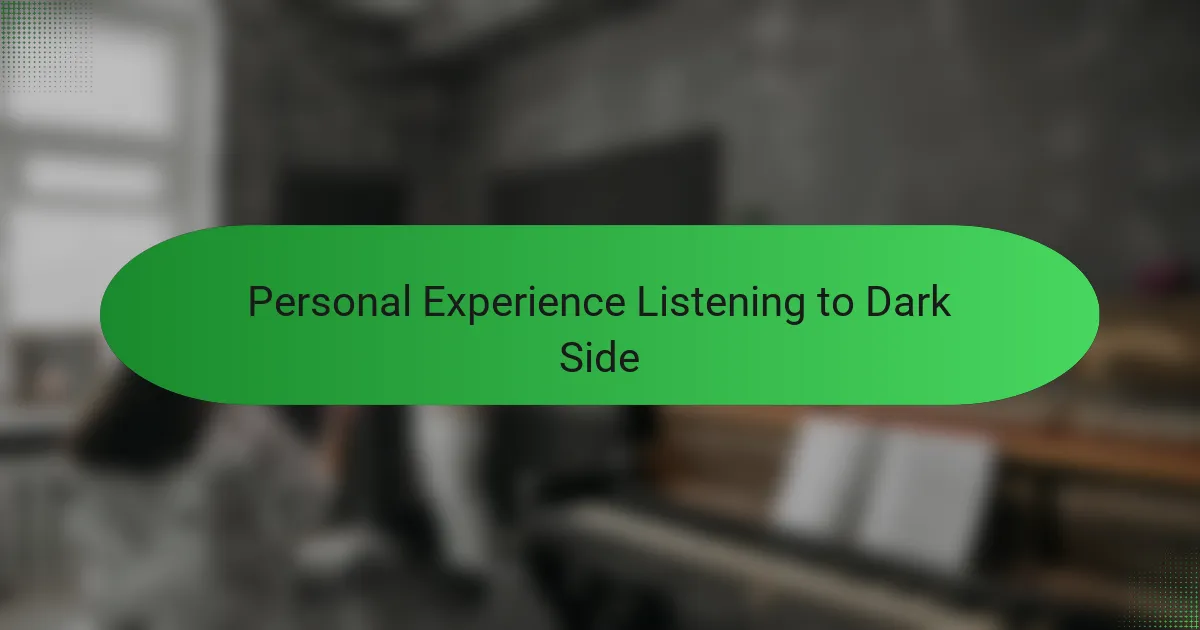
Personal Experience Listening to Dark Side
Listening to Dark Side of the Moon for the first time was like stepping into a new dimension of sound and emotion. I remember lying back with headphones on, completely absorbed, as if the music was gently unraveling parts of my mind I hadn’t explored before. Have you ever had an album wrap itself around your thoughts so tightly that time just slips away? That’s exactly how this one felt to me.
What surprised me most was how each listen revealed something different—sometimes a subtle lyric, other times a haunting synth line—that connected with whatever I was feeling at the moment. It was almost like the album was a living, breathing conversation between me and the band. Did you ever encounter music that somehow understands your mood better than you do? Dark Side did that repeatedly for me.
Sometimes, after a long day, I’d put the album on just to feel a sense of calm mixed with reflection. Those moments where “Breathe” or “The Great Gig in the Sky” played softly in my ears felt deeply personal, almost like an emotional reset. Isn’t it remarkable when music offers both solace and challenge at the same time? That balance is what made my experience with Dark Side truly unforgettable.
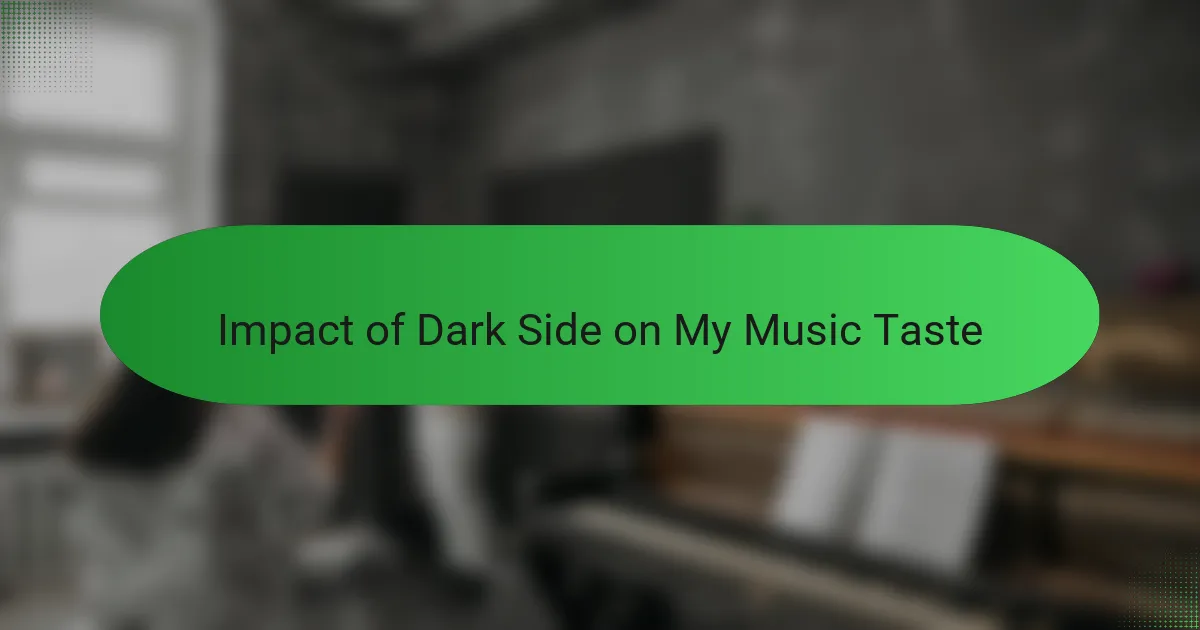
Impact of Dark Side on My Music Taste
Dark Side of the Moon didn’t just influence my playlist; it reshaped how I approached music altogether. Before, I mostly sought catchy riffs or powerful vocals, but this album taught me to listen for depth—layers of meaning hidden in sound and silence. Have you ever caught yourself replaying a song, not just for the tune but to unpack what it really means? That’s the kind of listening Dark Side encouraged in me.
I found myself exploring other genres and artists who dared to blend storytelling with music, inspired by how Pink Floyd blurred lines between rock, jazz, and even ambient sounds. It’s like the album cracked open a door to a more adventurous musical world, and I eagerly stepped through. Isn’t it amazing how one record can expand your horizons and redefine your tastes?
Sometimes, when I’m searching for music that resonates with my mood, I go back to Dark Side and then branch out from there. It’s become a kind of compass for my musical journey, reminding me that great music reaches beyond entertainment—it challenges, comforts, and connects. Do you think music can really change the way we see the world? For me, this album did just that.
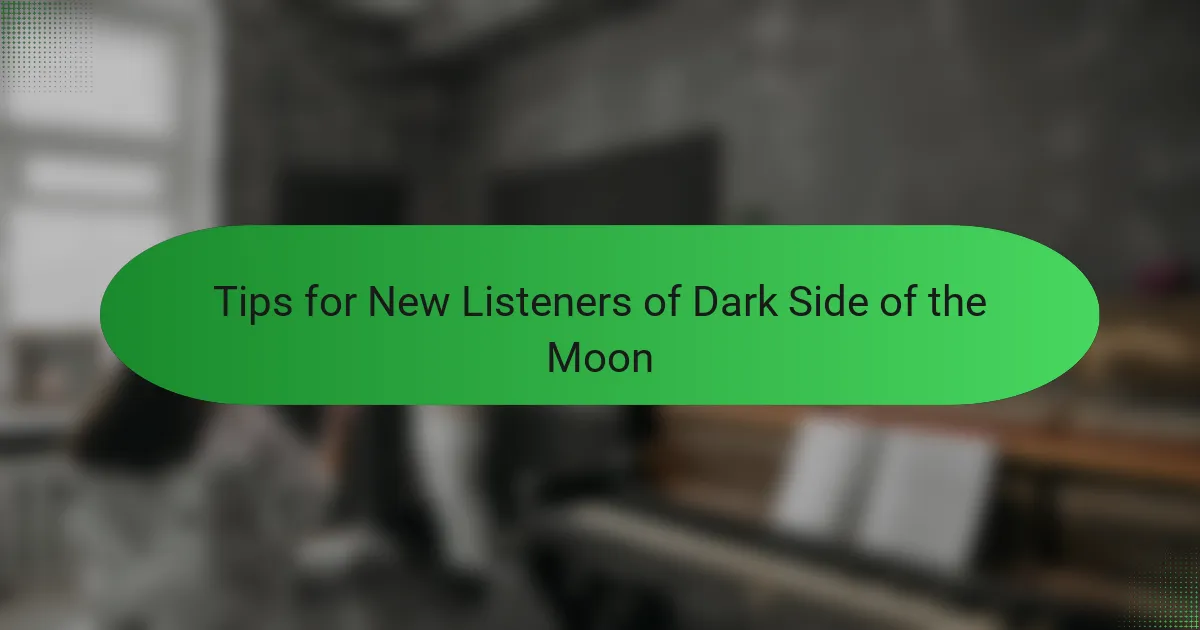
Tips for New Listeners of Dark Side of the Moon
When I first approached Dark Side of the Moon, I made sure to listen in a quiet space without distractions. It’s easy to miss the subtle sound effects and layered melodies if you’re not fully present. Have you tried putting on headphones and just letting the album wash over you? That focused listening changed everything for me.
Don’t rush through the album either—Dark Side is meant to be experienced as a whole, from start to finish. Pausing between tracks breaks the flow, and you might lose the emotional journey Pink Floyd crafted so deliberately. I remember sitting with it one evening, allowing each song’s mood to settle before moving on; it felt like discovering a new chapter every time.
Lastly, keep an open mind about the themes explored. At first, some of the lyrics seemed abstract or heavy, but as I reflected on them, they started to resonate more deeply. Have you ever noticed how certain music speaks differently depending on your mood or life stage? I’ve found that returning to this album at different times brought me fresh insights each time.